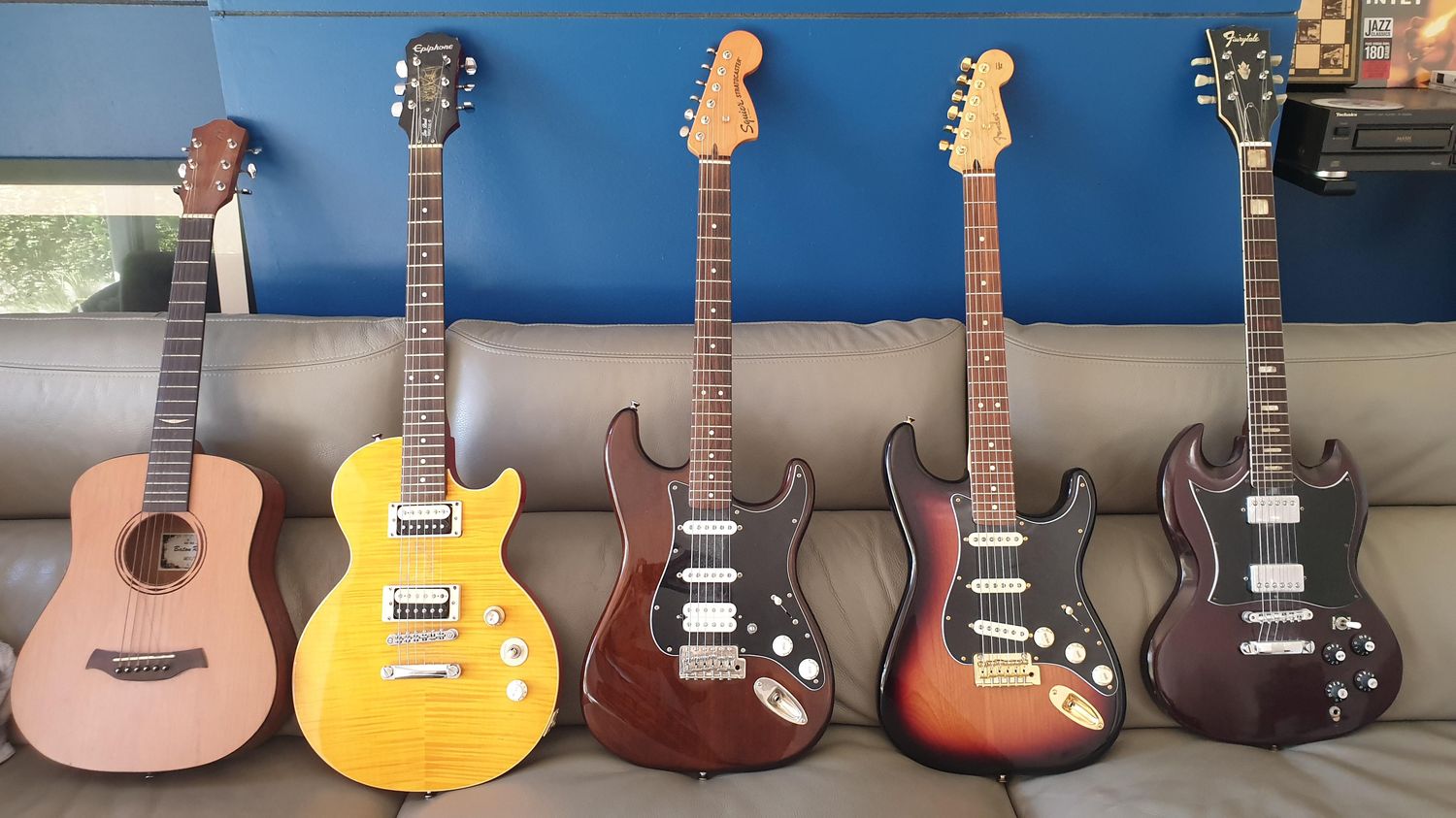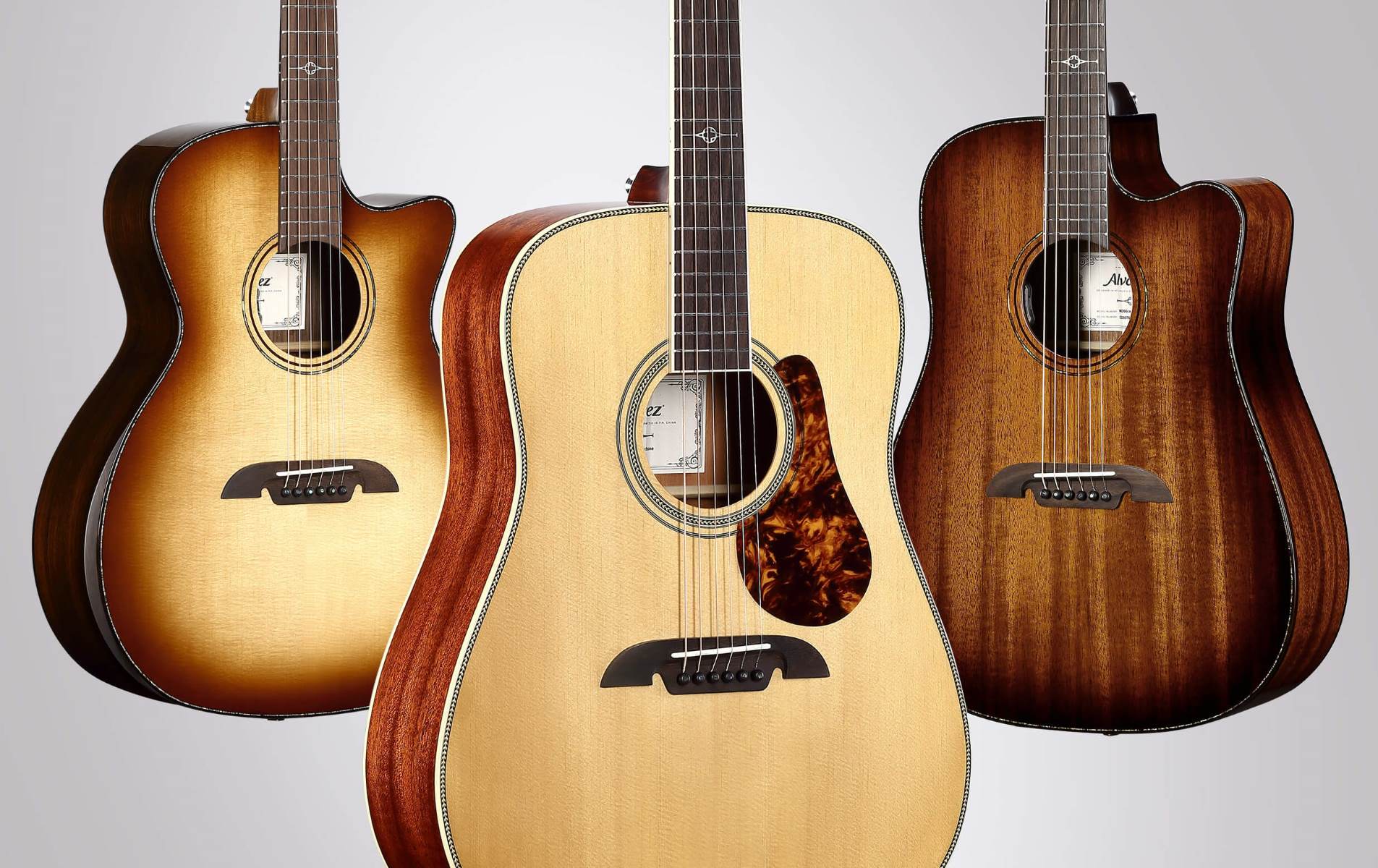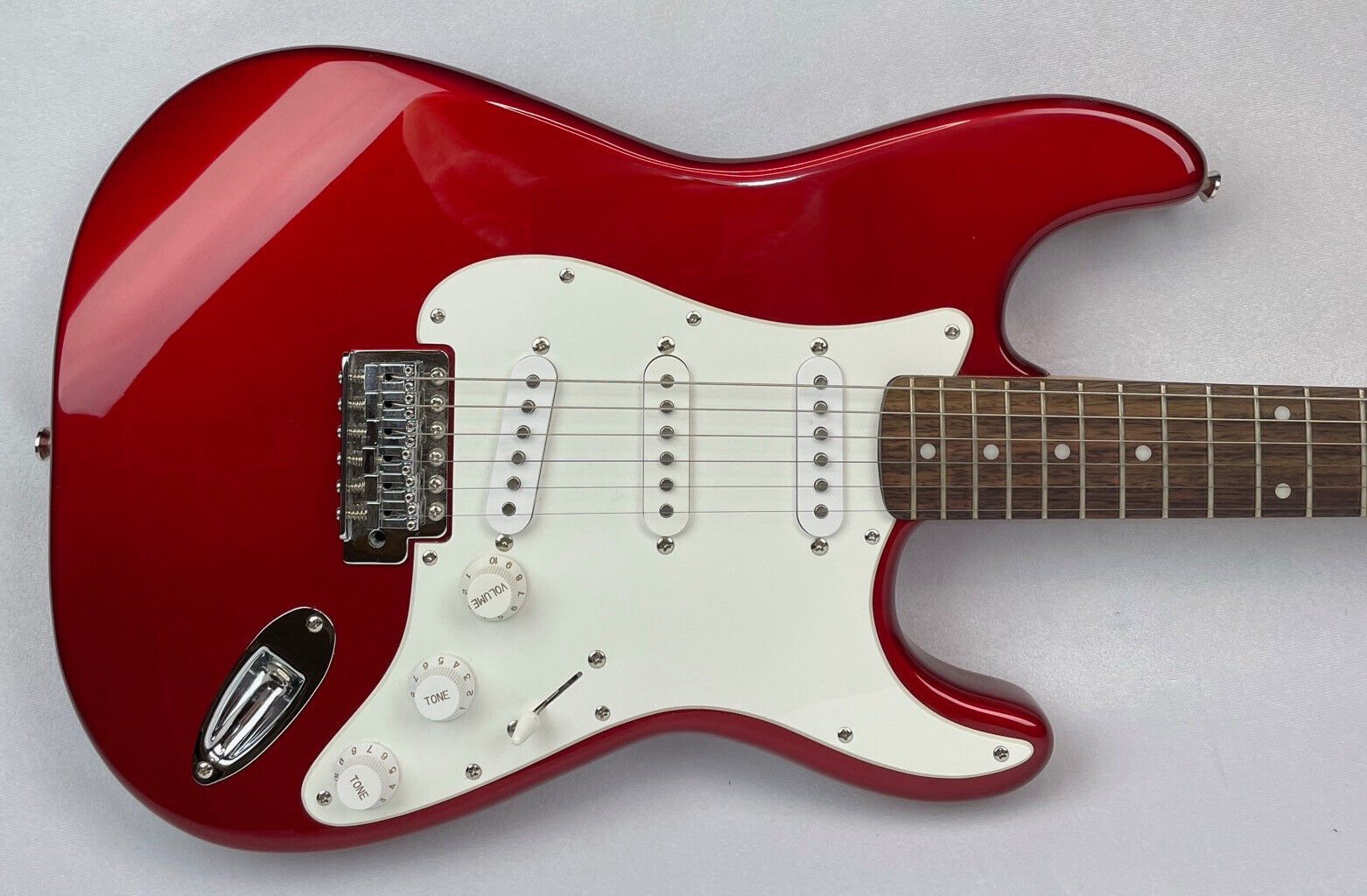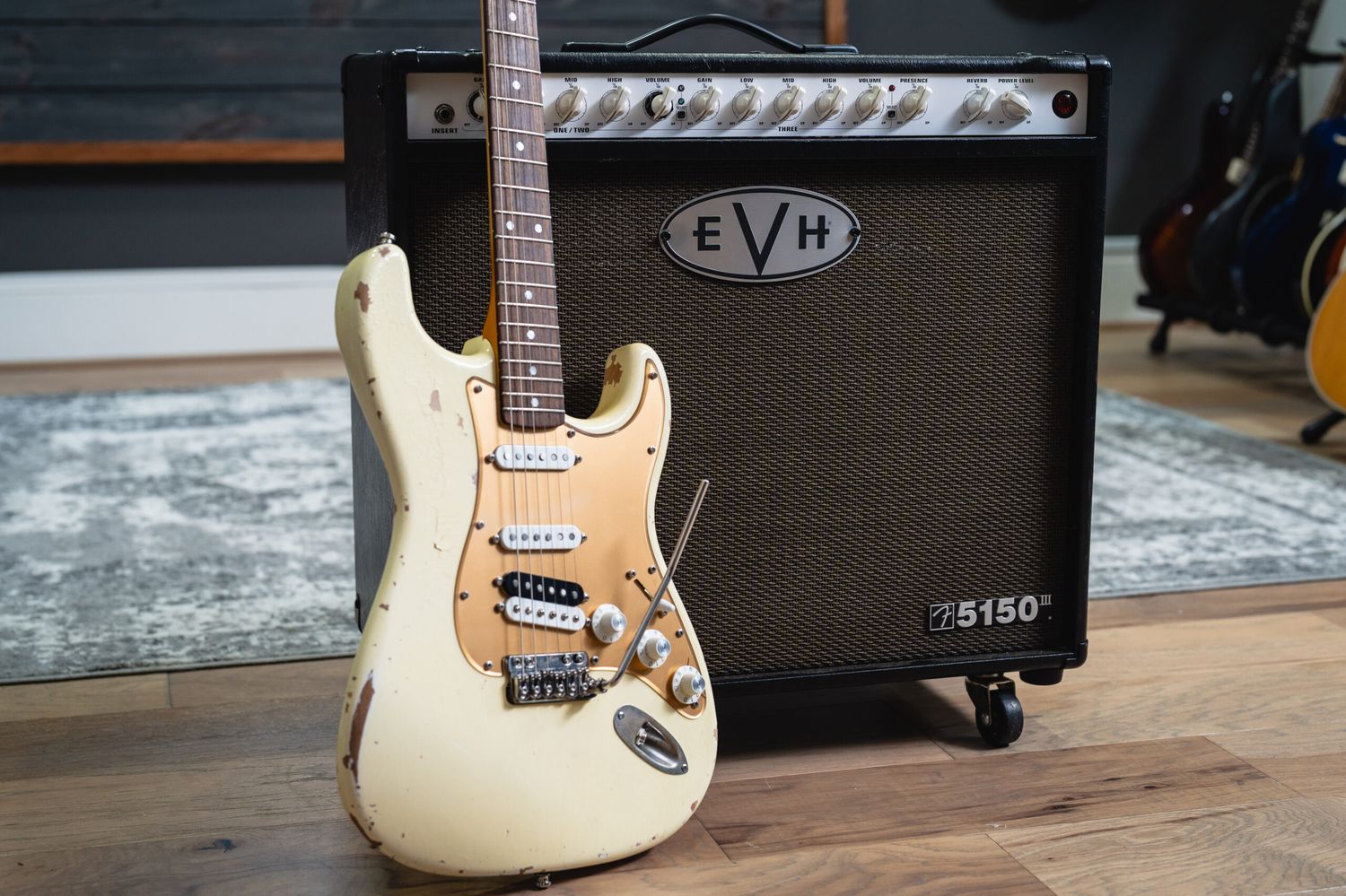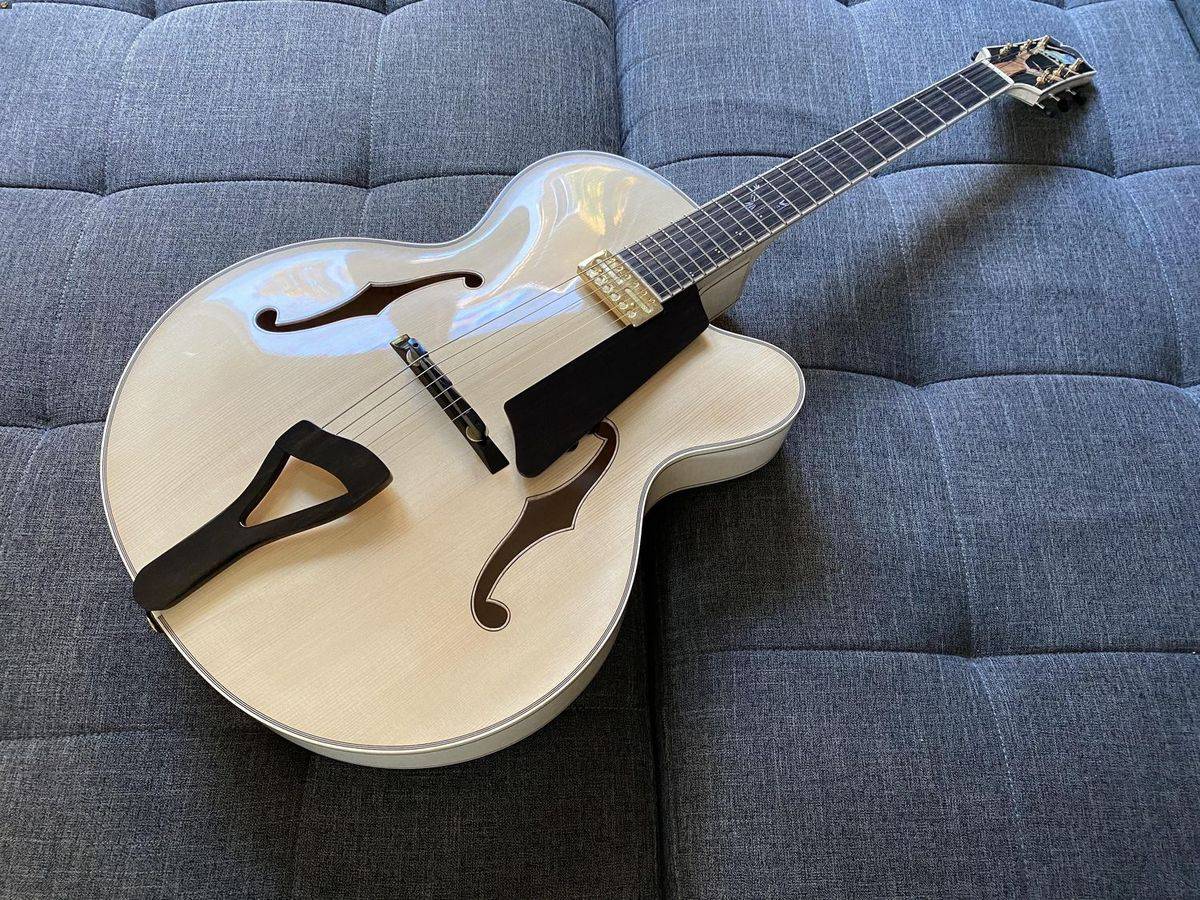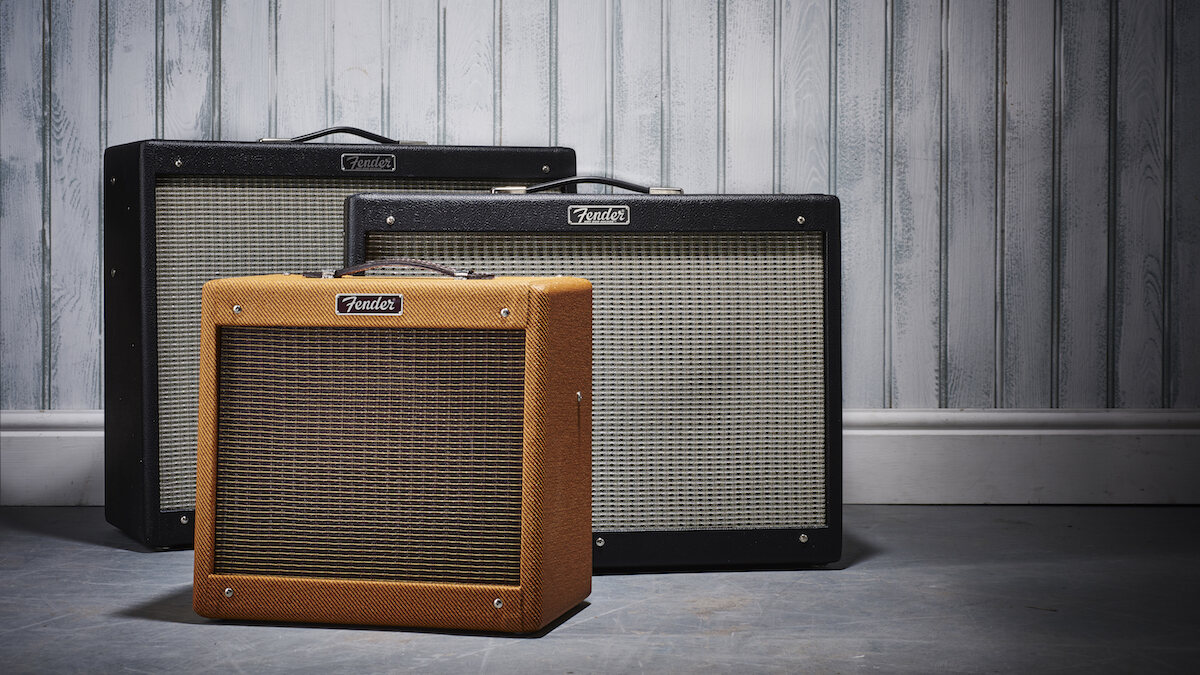Home>Instruments>Guitar>What Is The Bridge On A Guitar
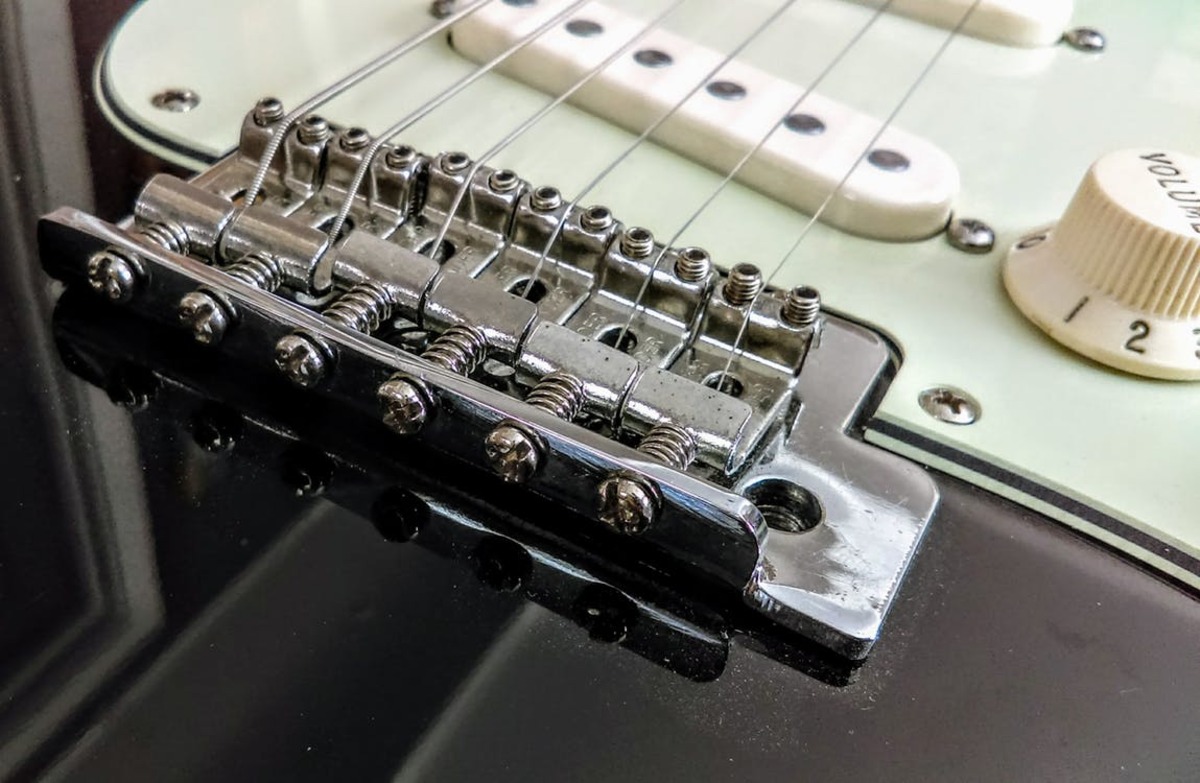

Guitar
What Is The Bridge On A Guitar
Published: February 15, 2024
Learn about the bridge on a guitar and its role in producing sound. Understand the different types of guitar bridges and their impact on playability and tone.
(Many of the links in this article redirect to a specific reviewed product. Your purchase of these products through affiliate links helps to generate commission for AudioLover.com, at no extra cost. Learn more)
Table of Contents
Introduction
So, you've picked up a guitar and started strumming away, but have you ever wondered about all the intricate parts that make up this beloved instrument? One essential component of a guitar that often goes unnoticed is the bridge. The bridge plays a crucial role in shaping the sound and playability of the guitar, yet it's often overshadowed by the more prominent features like the fretboard or the headstock.
Understanding the bridge and its significance can deepen your appreciation for the instrument and even help you enhance your playing experience. Whether you're a novice guitarist or a seasoned player, delving into the world of guitar bridges can unveil a wealth of knowledge that may just transform the way you perceive and interact with your instrument.
In this comprehensive guide, we'll journey through the ins and outs of guitar bridges, exploring their anatomy, purpose, various types, and how to make adjustments for optimal performance. By the end of this exploration, you'll have a newfound understanding of this often overlooked yet indispensable component of the guitar. So, let's dive in and unravel the mysteries of the guitar bridge!
Anatomy of a Guitar
Before we delve into the specifics of the bridge, it’s essential to grasp the basic anatomy of a guitar. The bridge is situated on the body of the guitar, anchoring the strings at the lower end. It serves as a critical link between the strings and the soundboard, which is responsible for projecting the sound produced by the vibrating strings.
Typically, the bridge consists of several key elements, each playing a distinct role in the functionality of the guitar. These elements include:
- Bridge Plate: This is a piece of rigid material, often made of wood or metal, located beneath the bridge. It provides reinforcement and stability for the bridge and the strings.
- Saddle: Positioned on the bridge, the saddle serves as the contact point for the strings. It’s crucial in transmitting the vibrations from the strings to the soundboard, contributing to the resonance and tone of the guitar.
- Bridge Pins: In acoustic guitars, bridge pins secure the ends of the strings in place at the bridge. These pins anchor the strings and ensure they maintain the proper tension for optimal intonation and playability.
Understanding the intricate interplay between these components is fundamental to comprehending the role of the bridge in producing the rich, resonant sounds that define the essence of the guitar.
Purpose of the Bridge
The bridge of a guitar serves a multitude of crucial functions that significantly impact the instrument’s sound and playability. One of its primary roles is to anchor the strings securely to the guitar’s body, ensuring they remain taut and in place during play. By providing a stable anchor point, the bridge enables the strings to maintain proper tension, facilitating accurate intonation and tuning.
Furthermore, the bridge plays a pivotal role in transmitting the vibrations from the strings to the soundboard, a vital component responsible for amplifying and projecting the sound. The transfer of these vibrations through the bridge to the soundboard is integral to producing the resonant tones and rich harmonics that characterize the guitar’s sound.
In electric guitars, the bridge also influences the sustain and resonance of the instrument. Different bridge designs can impact the way the strings vibrate and interact with the pickups, ultimately shaping the tonal characteristics and overall performance of the guitar.
Beyond its mechanical functions, the bridge contributes to the aesthetic appeal of the guitar, often serving as a focal point of the instrument’s design. Whether it’s a sleek, modern tremolo bridge on an electric guitar or an intricately crafted wooden bridge on an acoustic model, the bridge adds a touch of visual allure to the instrument.
Understanding the multifaceted role of the bridge sheds light on its significance in shaping the overall sound, feel, and appearance of the guitar. By recognizing its impact, guitarists can develop a deeper appreciation for this often overlooked yet indispensable component of their beloved instrument.
Types of Bridges
Guitar bridges come in various designs, each offering distinct characteristics that influence the instrument’s sound, playability, and aesthetic appeal. Understanding the different types of bridges can provide valuable insights for guitarists seeking to explore diverse tonal qualities and performance attributes.
1. Fixed Bridges: Commonly found on acoustic guitars and some electric models, fixed bridges, also known as hardtail bridges, are affixed securely to the guitar body. They offer excellent tuning stability and robust sustain, making them popular among players who prioritize reliability and simplicity.
2. Tremolo Bridges: Also referred to as vibrato bridges, tremolo bridges are prevalent in electric guitars, particularly those designed for dynamic pitch manipulation through tremolo arm usage. These bridges allow players to create subtle vibrato effects and dramatic pitch bends, adding expressive depth to their playing.
3. Classical Guitar Bridges: Classical or nylon-string guitars feature a unique bridge design with a distinctive tie-block that secures the knotted ends of the strings. This traditional bridge type contributes to the characteristic mellow and warm tones associated with classical guitar music.
4. Archtop Guitar Bridges: Archtop guitars, renowned for their jazz and blues heritage, often sport floating bridges. These bridges are not affixed to the guitar top, allowing for greater resonance and acoustic responsiveness, traits highly prized in the genres for which these guitars are favored.
5. Bigsby Bridges: Bigsby bridges, synonymous with vintage rockabilly and country music, are revered for their smooth vibrato effects. Often featured on hollow-body and semi-hollow electric guitars, Bigsby bridges contribute to the distinctive twang and shimmer associated with these musical styles.
By familiarizing themselves with the diverse array of guitar bridge types, players can tailor their instrument choices to align with their preferred playing styles, sonic preferences, and tonal aspirations. Each bridge design offers a unique sonic fingerprint, enriching the musical journey for guitarists seeking to explore the boundless possibilities of their craft.
Adjusting the Bridge
Properly adjusting the bridge of a guitar is crucial for maintaining optimal playability, intonation, and tonal characteristics. Whether it’s fine-tuning the string height for comfortable fretting or ensuring accurate intonation across the fretboard, understanding how to adjust the bridge empowers guitarists to customize their instruments to suit their playing preferences.
1. String Height Adjustment: The height of the strings above the fretboard, known as the action, significantly impacts the playability and comfort of the guitar. By adjusting the bridge’s saddle height, players can optimize the action to suit their playing style, whether it’s fast-paced lead playing or intricate fingerstyle techniques.
2. Intonation Adjustment: Achieving accurate intonation is essential for ensuring that each note rings true across the entire fretboard. By adjusting the saddle positions, guitarists can fine-tune the string lengths, compensating for discrepancies that may arise due to string gauge or tuning variations.
3. Tremolo Setup: For guitars equipped with tremolo bridges, setting up the bridge properly is crucial for achieving smooth tremolo arm operation and stable tuning. Balancing the spring tension and ensuring proper bridge alignment can enhance the functionality and reliability of the tremolo system.
4. Bridge Pickup Height: In electric guitars, the bridge pickup’s height can significantly influence the instrument’s tonal characteristics. Adjusting the pickup height at the bridge allows players to fine-tune the balance between clarity, output, and tonal warmth, shaping the overall sonic profile of the guitar.
By mastering the art of bridge adjustments, guitarists can unleash the full potential of their instruments, tailoring them to deliver optimal performance and sonic versatility. Whether it’s achieving buttery-smooth tremolo effects, refining string response, or fine-tuning tonal nuances, the ability to adjust the bridge empowers players to sculpt their ideal playing experience.
Conclusion
Exploring the intricacies of the guitar bridge unveils a world of craftsmanship, functionality, and sonic influence that profoundly shapes the instrument’s essence. From the humble fixed bridge to the expressive tremolo systems, the diverse array of bridge types reflects the rich tapestry of musical styles and player preferences.
Understanding the pivotal role of the bridge in anchoring the strings, transmitting vibrations, and shaping the guitar’s tonal character underscores its significance as a cornerstone of the instrument’s design. The bridge not only influences the playability and intonation but also contributes to the guitar’s aesthetic allure, embodying both form and function in perfect harmony.
Moreover, the ability to adjust the bridge empowers guitarists to personalize their instruments, fine-tuning every facet to suit their unique playing styles and sonic aspirations. Whether it’s dialing in the perfect string height, achieving spot-on intonation, or refining the tremolo system’s responsiveness, bridge adjustments offer a gateway to unlocking the full potential of the guitar.
As you continue your musical journey, may this exploration of the guitar bridge inspire a deeper appreciation for the instrument’s craftsmanship and the profound impact of its components on the art of music-making. Whether you’re strumming soulful melodies on an acoustic guitar or unleashing searing riffs on an electric model, the bridge stands as a steadfast ally, bridging the gap between creativity and expression.
So, the next time you pluck a string and feel the resonance reverberate through the instrument, take a moment to acknowledge the unsung hero that is the guitar bridge—a testament to the artistry and engineering that culminate in the creation of every guitarist’s faithful companion.


